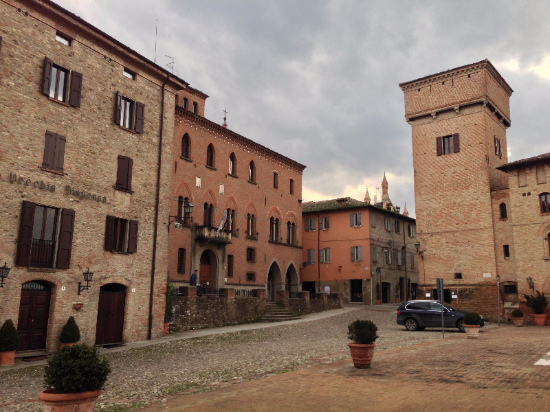Fifty years ago, the balsamic vinegar industry that we know didn’t exist. That’s not to say that balsamic vinegar didn’t exist. It’s been made for centuries in the attics of almost every well-to-do family’s home in Modena, Italy. It’s just that no one outside of Modena knew about it. It wasn’t a conspiracy. It’s more like how if you came to my house I wouldn’t make a big point of telling you that I have aspirin in my medicine cabinet.
Because that’s kind of how balsamic was traditionally used. It was medicine. If you had a headache, take some balsamic. An upset stomach? Balsamic. (If my mom had given me balsamic medicine I probably would have been “sick” a lot more often.) It was so prized for its medicinal benefits that cooking with balsamic was seen as throwing it away.
On the rare occasions when balsamic was used for cooking it was a sign of extreme opulence.
If you were an Italian count throwing a dinner party in the late 15th century, one way to impress your guests was to serve them balsamic. You’d siphon a bit off from the barrel into the fanciest cruet you could find, carry it to the table and make a big show of drizzling it over rich dishes: roasted meats, or risottos, or stuffed pasta. It would never be wasted on a salad. Wild bitter greens and simple vegetables—those were poor people’s food.
By the 1960s the word about balsamic started to get out and food tourists put Modena on their itinerary. Demand grew but the supply didn’t. Traditional balsamic was (and is) still made the way it always had been: aged for a dozen or more years in small wooden barrels. These days, you’ll be hard pressed to find a bottle of real traditional balsamic selling for less than $100.
Around that time, though, some balsamic makers started looking for ways to offer a more affordable version. While traditional balsamic is made exclusively from cooked grape juice (called “must”), these folks added wine vinegar. They also shortened the aging times, sometimes to just a couple of months. The result was a balsamic that could be made in much larger quantities and sold at a much lower price. It took off. By the late 1980s you could find a bottle of this former home remedy in nearly every kitchen in America.
That flood of balsamic on the market isn’t always good.
At its worst, balsamic condiment—the name often given to non-traditional balsamico—is caramel colored sugar water made with little must, cheap red wine vinegar, coloring and sugar. Read the ingredient list, it will list any large-scale abominations: you want to see one where grape must is the first ingredient (if not the only). If it costs less than ten bucks it’s probably “balsamic” in name only. Done with care, though, like with the vinegars of La Vecchia Dispensa, balsamic makes an excellent addition to the kitchen.

